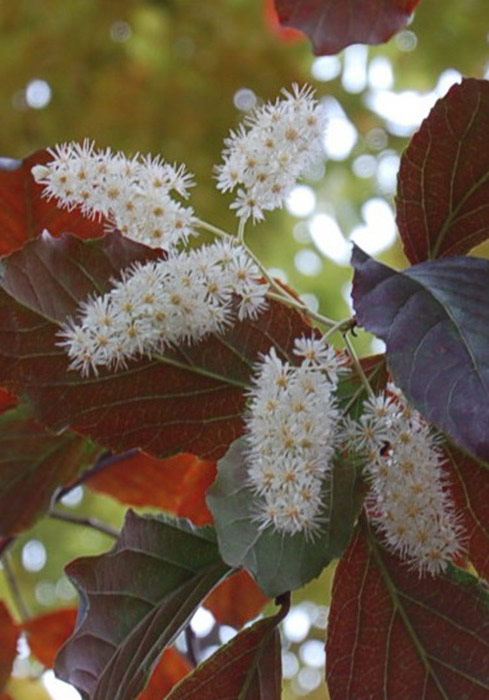Homalium cochinchensis
The homalium is a medium to large deciduous tree that can reach heights of over 20 meters. Its most distinctive feature is the seasonal transformation of its foliage—turning vivid red or orange-red in autumn and winter before shedding its leaves. This striking color change creates a rare scene of autumn hues amid Taiwan’s predominantly evergreen forest landscape.
Although each flower of the homalium is only about 1 centimeter in diameter, it possesses 6 to 8 slender petals arranged like rays of a tiny sun. Each petal measures around 0.4 centimeters in length and bears fine hairs along its edges, while the stamens arise directly from the petals, giving the flowers a delicate yet distinctive appearance.
The homalium is naturally distributed across southern China, Vietnam, India, and tropical regions of Southeast Asia. In Taiwan, it is found in low-elevation broadleaved forests below 1,000 meters, preferring sunny slopes and streamside habitats. Well-known sites where it occurs include Baling in Taoyuan, Huoyanshan in Miaoli, Dadu Mountain in Taichung, Puli in Nantou, and Dona in Kaohsiung. Despite its wide geographic range, natural populations in Taiwan are typically scattered and fragmented. Habitat loss, competition from invasive species, and human development pressures have reduced its natural regeneration capacity, limiting its recovery and growth. According to surveys conducted by forestry and conservation agencies, most areas no longer support continuous stands of the species, with individuals or small populations now mostly found along forest edges or within secondary forests.
At the National Museum of Natural Science, homalium trees are cultivated on the hills of the Central Lowland Area and along the grassland edges of the Southern Lowland Area within the Botanical Garden. Each year, during the cool season, their brilliant red foliage adds a vivid splash of color to the landscape-creating one of the garden’s most captivating scenes of autumn beauty.

